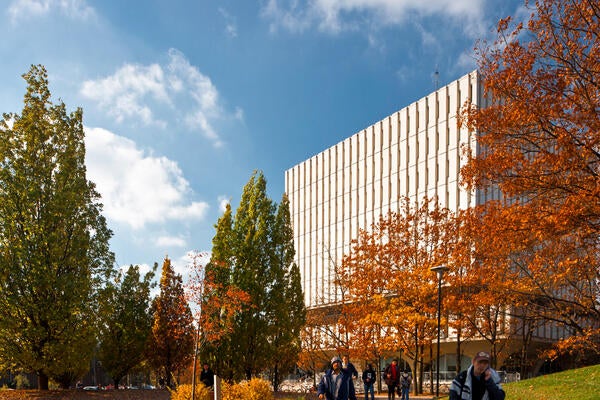
Beyond flight shaming
In an industry with soaring growth, keeping air travel sustainable means training future aviators to transform the industry

In an industry with soaring growth, keeping air travel sustainable means training future aviators to transform the industry
By Sam Toman Faculty of Environment
The commercial aviation industry is set to grow from roughly four billion passengers to more than eight billion in less than 20 years, creating an industry-wide priority to fill the expected shortfall of aviation professionals. With concerns about the industry’s carbon footprint growing, a sustainable future for aviation means training future aviators who can strike a balance between the economic and social benefits of flying and its environmental impacts. But striking a balance is what environmentalists refer to as a “wicked problem.”
“Right now, aviation is responsible for roughly two per cent of global emissions. That’s close to 12 per cent of all transportation-related emissions,” Suzanne Kearns says, an associate professor of aviation in the Faculty of Environment. “It may not seem like much, but think of how many trips by car people take, compared to flights. It has an outsized impact.”
Aviation, as an industry, employs more than 60 million people around the world. If aviation were a country, its economic impacts would rank it 21st in size by gross domestic product. 80 per cent of aviation emissions come from flights more than 1,500 kilometres, which means there isn’t another viable form of timely transportation for these trips.
With flight shaming a growing concern, which is the inherent guilt that an individual might feel as a result of one's aviation-related carbon footprint, this social phenomenon will only worsen as the industry experiences explosive growth.
“This is a problem, but it’s also an opportunity,” Kearns says. “Young aviators have a new level of environmental awareness and they know they have a responsibility to make the industry more sustainable. We can be here to help foster that sense of duty and help them apply it to an industry that needs them.”
Only a little more than a decade old, Aviation at the University of Waterloo is already the largest university-based aviation program in Canada. With many established flight schools across the country to choose from, future flyers are coming to Waterloo’s joint Faculty of Science and Faculty of Environment program because they don’t just want to learn how to fly, they want to build an industry that’s fair to the planet and its people.
“There is a lot of work needed to achieve a sustainable future for air transportation. We cannot address the challenges facing the future of aviation using the tools of the past,” Kearns says. “This means giving equal weight to economic growth, environmental protection and social inclusion. The advantage of studying aviation at a university like Waterloo is that we have the instructional resources to bring in expertise that goes beyond the technical aspects of flying.”
Kearns also served as the vice-chair of outreach for the International Civil Aviation Organization’s (ICAO) Next Generation of Aviation Professional (NGAP) program and developed the ICAO/UWaterloo Fundamentals of the Air Transport System (FATS) e-learning course.
The FATS course is designed to teach young adults about international aviation, and has been completed by thousands of people from around the world. It is interactive, narrated by Kearns, and reviews a variety of aviation sectors (air law, aircraft, operations, air navigation, airports, security, accidents and safety).
But it’s the carbon footprint question that Kearns and her colleagues are increasingly focused on adding to all coursework.
“Sustainability is integrated within our aviation program from the very beginning. Just as the concept of safety is completely integral to every element of aviation operations, sustainability is emerging as equally intertwined,” Kearns says. “Students get multi-disciplinary instruction from some of the best in the business.”
The students also learn outreach techniques, human resources, education, safety science, national and organizational culture, language training, diversity and inclusion, human factors and flight physiology, new technologies and professional development among many others.
“Only through reducing and offsetting the negative impacts can we shine attention on the many benefits of air travel — transporting a third of the world’s cargo, bringing vital sustainable tourism to communities that depend upon it, employing people in established and emerging markets and supporting the future of young people who are passionate about this field.”

Read more
15 University of Waterloo researchers have been named to the annual Highly Cited Researchers™ list for significant contributions to their specific fields of research

Read more
Twenty-six researchers receive federal funding to drive discovery, innovation and research infrastructure development

Read more
The Royal Society of Canada welcomes five new fellows and one RSC College member from the University of Waterloo
The University of Waterloo acknowledges that much of our work takes place on the traditional territory of the Neutral, Anishinaabeg, and Haudenosaunee peoples. Our main campus is situated on the Haldimand Tract, the land granted to the Six Nations that includes six miles on each side of the Grand River. Our active work toward reconciliation takes place across our campuses through research, learning, teaching, and community building, and is co-ordinated within the Office of Indigenous Relations.